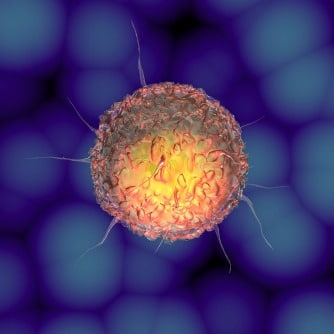University of Rochester’s Center for RNA Biology researchers have pinpointed a new means of hindering the growth of cells that characterize all different types of cancer. The study was spearheaded by the world famous RNA biology expert, Lynne E. Maquat and research assistant professor Reyad A. Elbarbary. Maquat also has a leadership role in the Wilmot Cancer Institute. Staff scientist Keita Miyoshi Ph.D. served as a lead study author along with Elbarbary. The research team’s findings were recently reported in the popular journal Science. The research was funded by the National Institutes of Health.
The cells used in the study were cervical and kidney cancer cells. Though the newly discovered means of slowing cancer cell growth is not immediately applicable to those stricken with cancer, it provides hope for the future. These findings could eventually form the foundation for successful treatment options at some point down the road.
Cancer: Cell Cycles Gone Awry
Every type of cell passes through a “cell cycle”. This is the series of events that result in proper cell growth and subsequent division. Cancerous cells have an abnormal cell cycle in which cells divide in an uncontrollable manner and reach nearby tissues.
About the Study
The research team pinpointed the protein known as “Tudor-SN” as integral to cells. This protein is vitally important for the preparatory component of the cell cycle. This is the period of time when cells prepare to divide. Scientists eliminated the protein from cells with a gene editing technology known as “CRISPR-Cas9”. When the protein was removed, cells took much longer to prepare to divide. The deletion of Tudor-SN significantly slowed down the cell cycle.
It was already known that Tudor-SN is more prevalent in cancer cells as opposed to healthy cells. The study findings indicate the targeting of the protein might slow down cancer cells that are growing extraordinarily fast. Elbarbary states compounds that block Tudor-SN will likely prove to be excellent candidates for upcoming therapies.
The Quest to Halt Cancerous Cell Growth
The research team found that Tudor-SN shapes the cell cycle by exerting control over microRNAs. These are molecules that fine-tune human gene expression. The removal of Tudor-SN from human cells spurs an increase in numerous microRNAs. Increasing the presence of microRNAs slows down the genes that promote cell growth. These genes are essentially put in the “off” position, allowing cells to move at a slower pace from the preparatory state to the phase of cell division. Cancer cells have a flawed cell cycle. Therefore, pursuing factors that play a part in the cell cycle might ameliorate cancer treatment efforts.
What Happens Next?
The research tandem of Maquat and Elbarbary followed up on their study by filing a patent application for methods that target Tudor-SN for treating and preventing cancer. In terms of advancing the research, the next step will likely involve obtaining an understanding of how Tudor-SN functions in unison with other proteins and molecules. It is hoped that scientists will eventually figure out the most appropriate drugs for the targeting of Tudor-SN.




